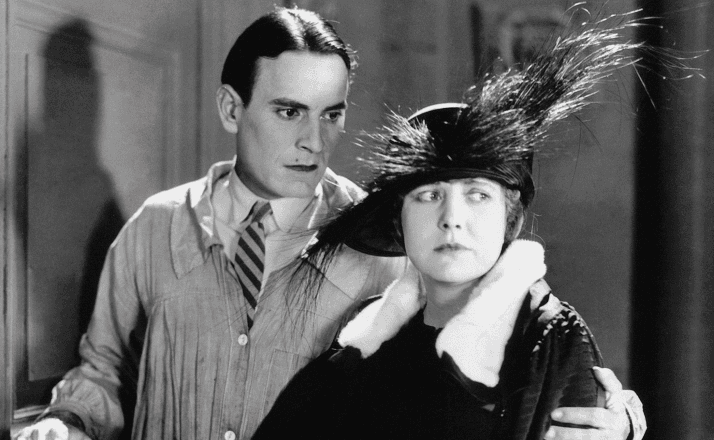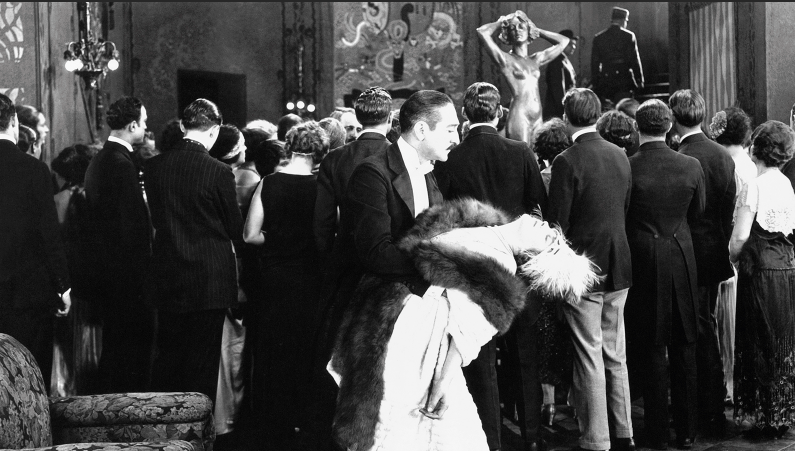When Charlie Chaplin Decided To Become Charles
His ‘A Woman of Paris,’ having a revival at Film Forum, is a minor film by a major artist and, as such, will repay your attention and may even prompt outright delight.

Almost exactly 100 years ago today, movie-goers were given something akin to a trigger warning, as we have come to know it. “In order to avoid any misunderstanding,” the introductory title card to “A Woman of Paris” (1923) reads, “I wish to announce that I do not appear in this picture. It is the first serious drama written and directed by myself.”
And so begins the debut feature of Charles Chaplin — not “Charlie” — for United Artists, the production company he founded in partnership with D.W. Griffith, Mary Pickford, and Douglas Fairbanks. Wearing his ambitions on his sleeve, the world’s most famous man would go on to misread the room or, rather, the culture. Shedding the baggy pants and derby hat, Chaplin perched himself behind the camera, whereupon he proceeded to stumble at the box office.
Audiences eager to see Chaplin’s tramp were, instead, confronted by a parable about the seductions of capital. They weren’t happy. Pickford, possibly keeping an eye on UA’s bottom line, praised “A Woman of Paris” as an entertainment that “does not constantly underestimate our intelligence,” and a few good reviews shambled in. Chaplin was not mollified. He pulled the picture from distribution and didn’t re-release it until 1976, writing a new score for it in the process.
What, you wonder, was wrong with the original score written by Louis F. Gottschalk? As it is, Chaplin’s music is chirpy to a fault, almost aggressively eager to underscore the emotional curves of the plot. Fortunately, Chaplin the director — more so than Chaplin the musician or screenwriter — worked with notable suppleness, crafting a film of exquisitely realized moments. By erring on the side of insinuation, Chaplin the auteur helps “A Woman of Paris” rise above mere melodrama. The film is running in revival for one week at Film Forum starting December 22.

The plot bears a resemblance to “The Lady of the Camillias,” more popularly known as “Camille,” the book and play by Alexandre Dumas fils. Reports have it that Chaplin also poached upon the adventures of Peggy Hopkins Joyce, a shimmery blonde whose brief film career is best exemplified by her innuendo-heavy back-and-forth with W.C. Fields in “International House” (1933). As a public personality, Joyce was renowned for her affairs, her engagements, her marriages, her divorces, and, in the end, her shamelessness.
Chaplin was among the men with whom Joyce cavorted, and, if “A Woman of Paris” is any indication, he committed the details of her kiss-and-tell stories to memory. The picture bases itself on the supposed core truth that life in the country is given to purity and goodness, while the city is overrun with unsavory types who will leave no immoral stone unturned. Guess which mode of life Chaplin the moralist extols. Then guess which mode Chaplin the auteur conveys more convincingly.
A young couple out in the provinces, Marie St. Clair (Edna Purviance) and Jean Millet (a brooding Carl Miller), decide to elope to Paris due to parental disapproval of their planned union. As Marie waits at the train station, Jean has a contentious argument with his father, who subsequently dies of a heart attack. A rushed telephone conversation between the couple is interrupted and then disconnected. Nothing has been settled: Jean stays in the sticks; Marie steps on the train; destiny awaits.
When we next meet Marie, some time has passed and she’s living in a luxury apartment surrounded by maids and dressed in expensive raiment. If it’s good to be the king, it might be even better to be the mistress of Pierre Revel (Adolphe Menjou), a man about town whose high-spending ways won’t, he assures Marie, be impeded by his upcoming nuptials to another woman. Whereupon Marie learns that Jean and his mother have moved to Paris. What is worth more: true love or a pearl necklace?
One of the movie’s great moments has Marie debasing herself by running after a homeless man to retrieve such a necklace — that she discarded in a fit of pique. Another memorable scene is explicitly comic as Marie undergoes a massage while a host of friends come over to engage in malicious gossip. Purviance doesn’t do much in this scene, as Chaplin concentrates on the periphery characters to carry its meaning. Nellie Bly Baker plays the masseuse and, within the span of seconds, she almost steals the film. Here’s a director who knew comedy gold when he saw it.
Purviance was Chaplin’s love interest in a host of his early comedies, but those stories revolved upon Charlie. As the centerpiece of “A Woman of Paris,” she’s too wan an actress to hold our attention — so much so, that we have to wonder just what it is that Revel, the arrant rake, sees in Marie. Menjou can’t help but outshine Purviance and is never more engaging than when hamming it up. You want devilishness played as pure charm? Here is that performance.
One gets the feeling that Chaplin gave Menjou a longer leash as an actor not only because he was adept at irony, but due to Revel being, in many regards, the director’s mirror image: dapper, funny, licentious, and sophisticated. Whatever the case, “A Woman of Paris” is a minor film by a major artist and, as such, will repay your attention and may even prompt outright delight.

